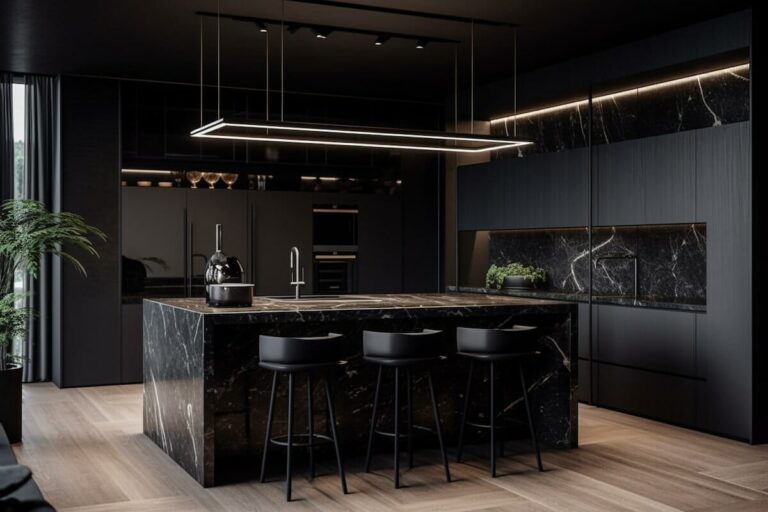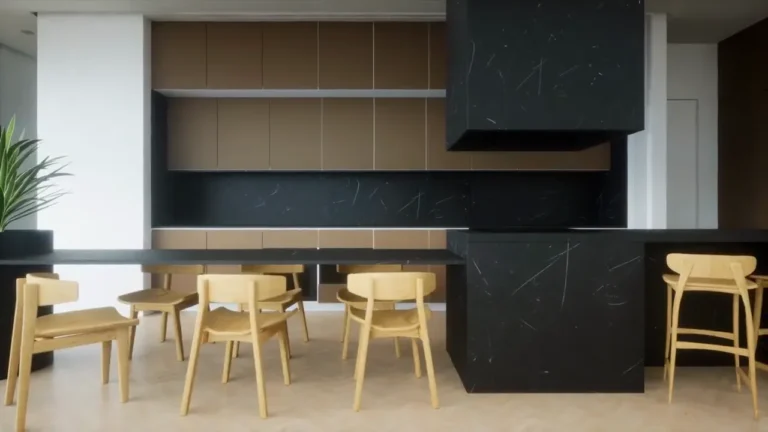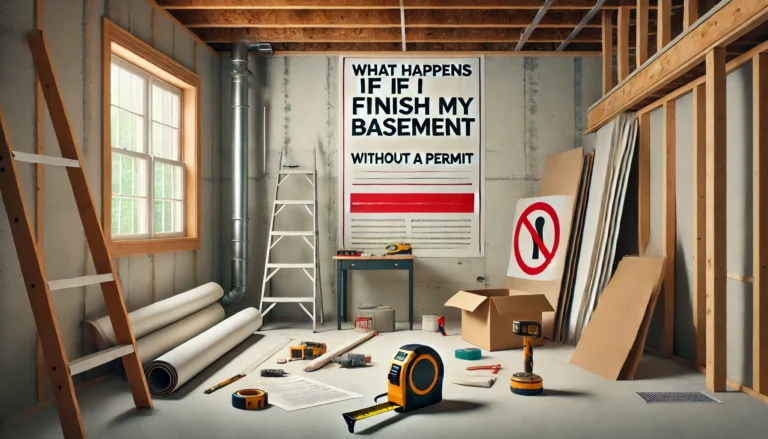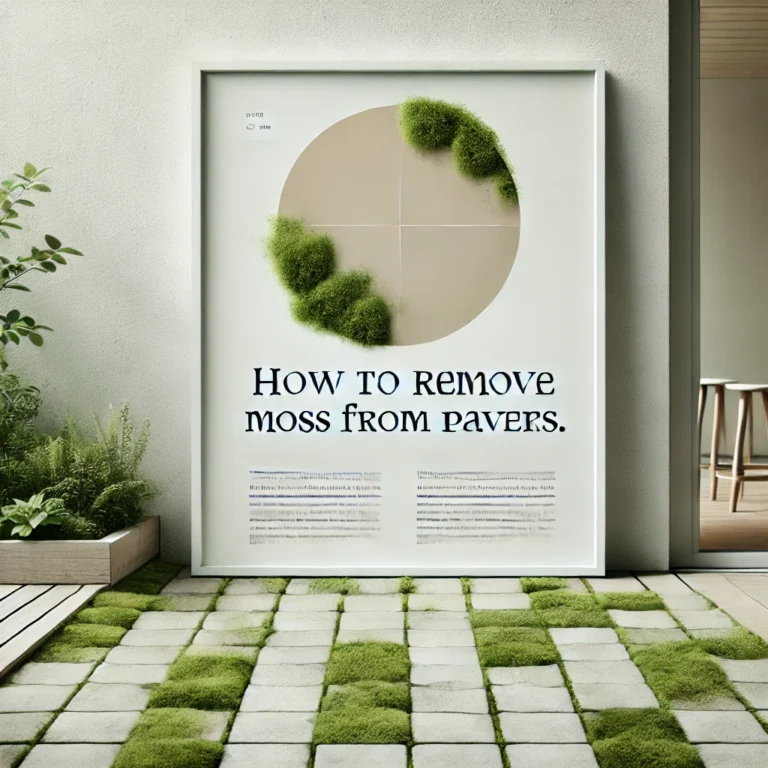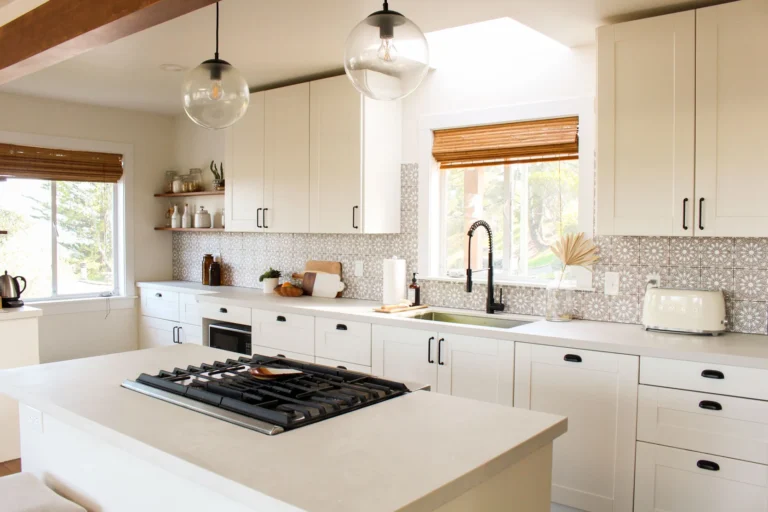Do You Have to Sand Cabinets Before Painting? Tips, Steps, and Expert Advice
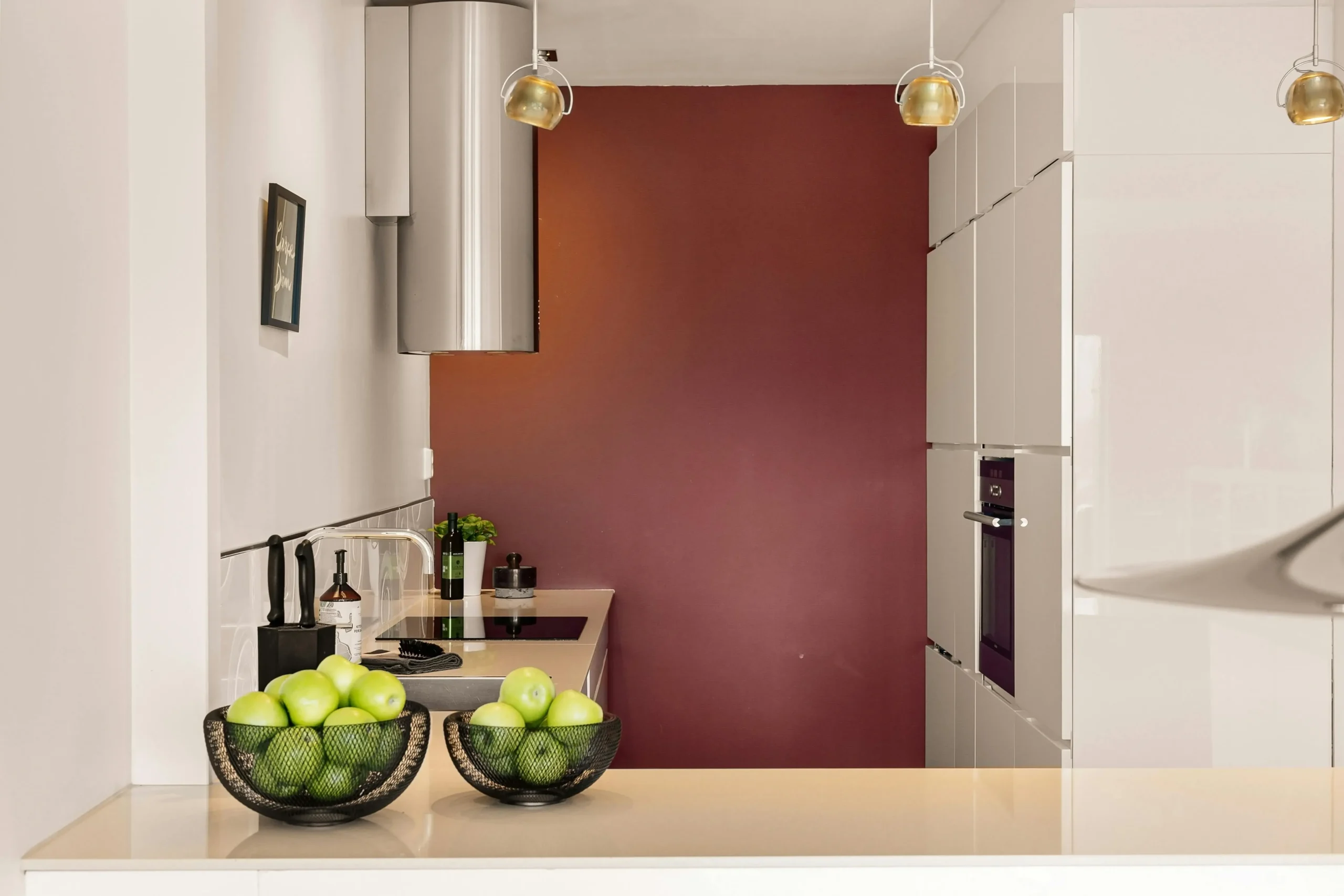
Introduction
Painting cabinets is a popular and cost-effective way to transform the look of your kitchen or bathroom. However, achieving a smooth and professional finish requires careful preparation. One of the most debated steps in this process is sanding—do you really have to sand cabinets before painting? This question often arises, especially for DIY enthusiasts and homeowners looking for a quick renovation solution.
In this guide, we’ll explore the importance of cabinet preparation, address common misconceptions about sanding, and provide expert advice to help you decide whether sanding is a necessary step for your project. By the end, you’ll have a clear understanding of how proper preparation ensures a flawless finish and long-lasting results.
Why Cabinet Preparation Is Key for a Flawless Finish
Proper preparation is the foundation of any successful painting project, especially when it comes to cabinets. Without adequate prep work, paint may not adhere properly, leading to issues like peeling, bubbling, or an uneven finish. Sanding helps to:
- Remove existing finishes or gloss for better paint adhesion.
- Smooth out imperfections, dents, or scratches.
- Create a surface that allows the primer and paint to bond effectively.
Skipping this step might save time initially, but it can result in poor-quality results that require costly fixes in the long run.
Common Questions About Sanding and Painting Cabinets
- Do you have to sand oak cabinets before painting?
- Is it possible to paint cabinets without sanding or priming?
- What tools and techniques are best for sanding cabinets?
- Should I sand cabinets if they’re in good condition?
We’ll answer these questions and more throughout this guide, ensuring you have all the information needed to achieve a professional-quality finish for your cabinets.
Do You Have to Sand Cabinets Before Painting?
The question of whether sanding is necessary before painting cabinets is one of the most common concerns among homeowners and DIY enthusiasts. The short answer? Sanding is often recommended but isn’t always mandatory. The need for sanding depends on factors such as the type of cabinets, their current finish, and the type of paint or primer being used.
If your cabinets have a glossy finish, visible imperfections, or peeling paint, sanding is a crucial step to ensure the paint adheres well. However, if the surface is already in good condition, there are alternatives to sanding that can save time while still providing excellent results.
Why Sanding Is Important for Proper Paint Adhesion
Sanding serves multiple purposes in the painting process:
- Removing Glossy Surfaces: Many cabinets, especially older ones, have a glossy finish that prevents paint from bonding. Sanding removes this layer, creating a rough surface that the primer and paint can grip.
- Smoothing Imperfections: Cabinets often have scratches, dents, or uneven surfaces. Sanding smooths out these imperfections, ensuring a seamless final look.
- Increasing Durability: By sanding, you allow the paint to penetrate deeper into the wood or material, resulting in a finish that is less likely to chip or peel over time.
- Ensuring Long-Term Results: While skipping sanding might seem convenient, it often leads to subpar results, requiring touch-ups sooner than expected.
Alternatives to Sanding: When It’s Optional
In some cases, you can skip sanding by using specialized products and techniques:
- Deglossers or Liquid Sandpapers: These chemical solutions remove the glossy finish without the need for manual sanding. They are especially useful for cabinets in good condition with minimal wear.
- Adhesive Primers: Certain primers are designed to bond with glossy or smooth surfaces without sanding. Products labeled as “bonding primers” are particularly effective for this purpose.
- Chalk Paint: This type of paint adheres to surfaces without requiring sanding or priming, making it a popular choice for quick cabinet makeovers.
- Light Cleaning and Scuffing: For cabinets that are already in great shape, a simple cleaning with a scouring pad and a mild abrasive cleaner can prepare the surface adequately.
While these alternatives are viable, keep in mind that sanding may still be necessary for cabinets with deep scratches, peeling finishes, or heavy damage. The key is assessing your cabinets’ condition before deciding on the best approach.
Do You Have to Sand Oak Cabinets Before Painting?
Oak cabinets present unique challenges when it comes to painting, largely due to their prominent wood grain and durable surface. While sanding oak cabinets before painting is typically recommended, it’s not always mandatory if you use the right techniques and products. Sanding helps smooth the surface, reduces the visibility of the grain, and ensures better paint adhesion, but alternative methods are available for those seeking less labor-intensive options.
The key consideration is the type of finish you want. If you aim for a smooth, modern look, proper surface preparation, including sanding, is essential. However, if you embrace the natural texture of oak grain, minimal sanding combined with specific painting techniques can suffice.
Unique Challenges of Painting Oak Cabinets
- Prominent Grain Pattern: Oak wood is known for its deep, open grain that tends to show through paint. Without proper preparation, the grain texture can disrupt a smooth finish.
- Hard Surface: Oak is a hard and dense wood, making it durable but sometimes challenging to work with. Proper preparation ensures paint adheres effectively.
- Absorption Issues: Oak absorbs stains and paints unevenly without sealing or priming, which can lead to a patchy appearance.
How to Smooth Out Oak Grain Without Heavy Sanding
If you want to minimize sanding while still achieving a professional look, follow these steps:
- Clean Thoroughly: Use a degreaser or mild cleaning solution to remove dirt, grease, and residue from the cabinets. This step ensures the surface is ready for further preparation.
- Use a Grain Filler: Apply a high-quality wood grain filler to fill in the open pores of the oak. This step smooths the surface and reduces the visibility of the grain texture.
- Apply a Bonding Primer: Opt for a primer designed to adhere to smooth and textured surfaces. This eliminates the need for heavy sanding while ensuring paint sticks effectively.
- Scuff Sanding: Instead of heavy sanding, lightly scuff the surface with a fine-grit sandpaper (220 grit). This removes any gloss and helps the primer adhere without extensive effort.
- Chalk Paint or Mineral Paint: If you prefer to skip sanding entirely, use chalk or mineral-based paint, which adheres well to oak without extensive preparation.
- Apply Multiple Paint Coats: To achieve an even finish, apply two to three coats of paint, allowing sufficient drying time between layers.
By combining these steps, you can transform oak cabinets into a sleek, modern centerpiece of your kitchen without extensive sanding while still addressing the challenges unique to oak wood.
Should You Sand Cabinets Before Painting?
Sanding cabinets before painting is often considered a crucial step in achieving a smooth, durable finish. It helps remove imperfections, deglosser the surface, and creates a texture for the paint to adhere to. However, the necessity of sanding depends on several factors, such as the current condition of your cabinets, the type of paint you’re using, and your desired outcome.
Skipping the sanding process can save time, but it may compromise the longevity and appearance of the finish. To decide whether sanding is essential for your project, consider the following:
The Risks of Skipping the Sanding Step
- Poor Paint Adhesion: Without sanding, the paint may not properly adhere to glossy or slick surfaces, leading to chipping and peeling over time.
- Visible Imperfections: Sanding smooths out nicks, scratches, and uneven surfaces, ensuring a professional-looking finish. Skipping this step can leave blemishes exposed.
- Reduced Durability: Cabinets are subject to heavy use. Sanding provides a stable base for paint, improving its resistance to wear and tear.
- Stains Bleeding Through: Without sanding, old stains or finishes can seep through the paint, altering its color and consistency.
Types of Paint That Work Best Without Sanding
If you’re looking to avoid sanding, choosing the right type of paint is essential. Certain paints and primers are specifically formulated to adhere well to pre-finished surfaces, reducing the need for sanding:
- Chalk Paint: Known for its excellent adhesion to various surfaces, chalk paint is a popular choice for skipping the sanding process.
- Mineral Paint: Similar to chalk paint, mineral-based paints bond well to slick surfaces without extensive preparation.
- Bonding Primer with Latex Paint: A high-quality bonding primer allows you to use traditional latex paint without sanding. It creates a strong foundation for the topcoat.
- Milk Paint with Bonding Agent: Milk paint, when mixed with a bonding agent, adheres well to existing finishes without the need for sanding.
Best Practices for Painting Without Sanding
- Clean Thoroughly: Ensure the cabinets are free of grease, dirt, and grime using a degreaser or TSP cleaner.
- Use a Bonding Primer: Apply a primer designed to stick to glossy or slick surfaces to ensure good adhesion.
- Test a Small Area: Before painting the entire cabinet, test a small area to confirm the paint adheres well without sanding.
- Seal for Durability: Use a clear topcoat or polyurethane finish to protect the paint and enhance its longevity.
By carefully selecting the right materials and techniques, you can paint your cabinets without sanding while minimizing the risks associated with skipping this critical step.
Do You Have to Prime Cabinets Before Painting?
Priming cabinets before painting is a critical step in ensuring a smooth, durable, and long-lasting finish. While it might seem tempting to skip this step, especially if you’re in a hurry, primer serves several essential functions. Whether you’re painting bare wood, previously painted surfaces, or glossy cabinets, primer often makes the difference between a professional-quality job and a finish that chips or peels prematurely.
The Role of Primer in Cabinet Painting
- Enhances Paint Adhesion: Primer creates a bonding layer that helps the paint stick better, especially to slick or glossy surfaces like laminate or previously sealed wood.
- Seals the Surface: Bare wood or porous surfaces can absorb paint unevenly. Primer seals the surface, preventing blotchy or uneven coverage.
- Prevents Stains and Tannin Bleed-Through: Old cabinets, especially those made of oak or mahogany, may release tannins or show stains. Primer blocks these from bleeding through the paint.
- Improves Paint Durability: A primed surface can better withstand the wear and tear cabinets endure in busy kitchens or bathrooms.
- Reduces the Number of Paint Coats Needed: Using a primer can minimize the number of paint coats required, saving both time and materials.
Situations Where Priming Is Essential
While priming is generally recommended, it is absolutely necessary in the following situations:
- Bare or Unfinished Wood: Wood fibers absorb paint unevenly, leading to a patchy finish. Primer evens out the absorption.
- Glossy or Non-Porous Surfaces: Cabinets with a high-gloss finish or laminate require primer to help paint adhere properly.
- Drastic Color Changes: If you’re transitioning from a dark stain or paint color to a lighter shade, primer helps cover the old color and prevents it from showing through.
- Stained or Damaged Cabinets: Primer blocks stubborn stains, watermarks, and discoloration from seeping into the paint.
- Knotty Wood: Wood types like pine have knots that can bleed through paint. A high-quality primer prevents this issue.
When You Might Skip Priming
In some cases, priming may not be necessary, depending on the paint or surface preparation:
- Self-Priming Paints: Some premium paints are formulated with primer included, reducing the need for a separate priming step.
- Chalk or Mineral Paint: These types of paint often adhere well to surfaces without a primer, but a bonding primer might still be useful for longevity.
- Previously Painted Surfaces in Good Condition: If the cabinets are already painted, clean, and free of gloss, you might be able to skip primer by lightly sanding and applying paint directly.
Tips for Effective Priming
- Choose the Right Primer: Use a bonding primer for glossy surfaces or a stain-blocking primer for heavily stained or tannin-rich wood.
- Clean the Surface First: Remove grease, grime, and dust to ensure the primer adheres well.
- Apply Evenly: Use a brush, roller, or sprayer to apply the primer in thin, even coats.
- Allow Proper Drying Time: Let the primer dry completely before applying the topcoat to avoid peeling or bubbling.
By understanding the role of primer and when it’s essential, you can ensure your cabinet painting project achieves professional, long-lasting results.
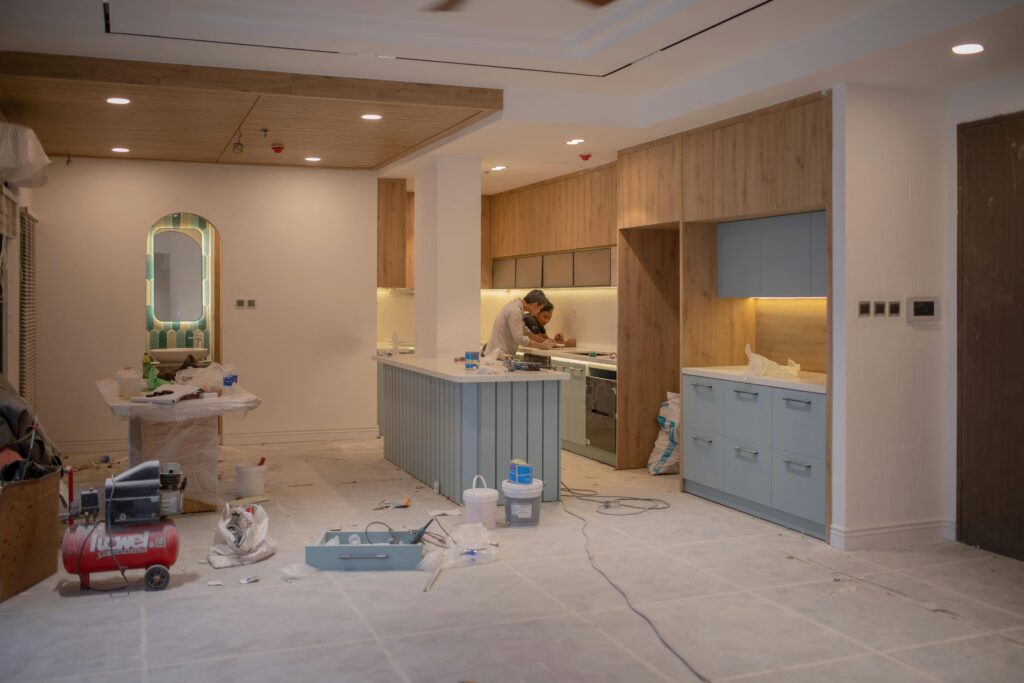
Do I Have to Sand Cabinets Before Painting Every Time?
Sanding cabinets before painting is a common step in the preparation process, but it’s not always necessary for every project. The decision to sand depends on the condition of the cabinets, the type of paint you’re using, and the desired finish. If your cabinets have a smooth, glossy surface or a previous coat of paint in good condition, sanding may not be required. However, in cases where the cabinets have a rough or uneven surface, sanding helps create a smooth base for better paint adhesion and a professional finish.
In general, if your cabinets are made of wood that’s in good condition and free from peeling paint, you might only need to clean them thoroughly before painting. But, if you’re switching from a glossy to a matte finish or applying a new layer of paint over an old, chipped, or worn-out finish, sanding is often essential to achieve the best results.
How to Determine If Your Cabinets Need Sanding
To determine whether your cabinets need sanding before painting, examine the surface and consider a few factors:
- Current Finish Condition: Check if the cabinets have a smooth and even finish. If the surface is glossy, chipped, or cracked, sanding is typically necessary. The rough texture will allow the new paint to adhere better.
- Paint Type: If you’re painting over an existing painted surface, determine if the current finish is a glossy one. Glossy finishes don’t bond well with new paint unless they are lightly sanded or scuffed.
- Wood Type: For raw wood or cabinets with a stained finish, sanding is usually essential to ensure the paint sticks properly. Raw wood, in particular, has a porous texture that benefits from sanding.
- Paint Adhesion Test: If you’re unsure whether the cabinets need sanding, perform a simple test by applying a small amount of paint in an inconspicuous area. If it adheres well without peeling or chipping, you can skip sanding. If the paint flakes off or does not adhere properly, sanding is necessary.
- Smoothness Requirement: If you desire a perfectly smooth finish, especially with high-gloss paints, sanding is recommended. It ensures the paint lays evenly, resulting in a more polished appearance.
Types of Cabinets That Don’t Require Sanding
While sanding is often a crucial part of the cabinet painting process, there are certain situations where you can skip this step. Here are some types of cabinets that generally don’t require sanding:
- Laminate Cabinets: Laminate cabinets usually don’t require sanding, but they do need a good cleaning and deglossing. Use a deglosser or liquid sandpaper to prepare the surface for painting. This will help the paint adhere without the need for physical sanding.
- New Cabinets with a Smooth Surface: If you’re working with brand-new cabinets that have a smooth, unsealed finish, sanding may not be necessary. Simply cleaning and priming them before painting should suffice.
- Cabinets with a Matte or Flat Finish: Matte or flat finishes typically don’t need sanding because the paint will adhere well without scuffing the surface. In this case, cleaning and priming are sufficient.
- Vinyl-Wrapped Cabinets: These cabinets have a smooth, plastic coating and don’t require sanding. However, as with laminate cabinets, you should clean and prime the surface for better paint adhesion.
- Cabinets with a Non-Glossy Surface: If the existing paint or finish is dull, not shiny, and in good condition, sanding may not be required. Instead, thorough cleaning and priming may be enough to achieve a good bond for the new paint.
How to Sand Cabinets for Painting: A Step-by-Step Guide
Sanding cabinets is a vital step in preparing them for a fresh coat of paint. Follow these steps for the best results:
- Clean the Cabinets: Before sanding, clean the cabinets thoroughly to remove dirt, grease, and old wax. Use a degreaser or a mixture of mild soap and water. Let the surface dry completely.
- Choose the Right Sandpaper: Start with a medium-grit sandpaper (around 120-grit) to break through any existing finish. If your cabinets have a smooth surface or glossy finish, you’ll need a coarser grit (80-grit) to help the paint stick.
- Sand the Surface: Use a sanding block or electric sander to evenly sand the cabinet surfaces. Sand in the direction of the wood grain to avoid damaging the surface. Be sure to cover the entire area, including the edges, doors, and drawer fronts.
- Smooth Out the Grain (If Necessary): For wood cabinets, sanding the grain can be especially important, as it can ensure a smooth, even finish. After sanding, you can use a finer grit (220-grit) to smooth things out.
- Check for Imperfections: After sanding, check the cabinet surfaces for any rough spots or uneven areas. If necessary, sand those areas again to achieve a smoother finish.
- Clean Again: After sanding, thoroughly wipe down the cabinets with a damp cloth to remove any sanding dust. Let them dry before proceeding with priming or painting.
Tools You’ll Need for Sanding Cabinets
To get the job done efficiently and effectively, you’ll need the right tools. Here’s a list of essential tools for sanding cabinets:
- Electric Sander (Orbital or Random Orbital): This tool makes sanding quicker and more uniform. It’s ideal for large, flat surfaces like cabinet doors and drawer fronts.
- Sanding Block: If you prefer manual sanding, a sanding block will help maintain even pressure, making it easier to control your sanding.
- Sandpaper: Various grits of sandpaper will be needed. Start with medium (120-grit), followed by finer grits (220-grit) for a smooth finish. Consider purchasing sandpaper specifically designed for woodworking.
- Dust Mask: Sanding produces fine dust particles, so it’s important to wear a dust mask to protect your lungs.
- Safety Goggles: Protect your eyes from dust and debris while sanding.
- Tack Cloth or Damp Cloth: Use a tack cloth to wipe down surfaces after sanding. This will ensure any residual dust is removed before priming or painting.
Techniques for Sanding Flat Surfaces vs. Detailed Trim
When sanding cabinets, you’ll approach flat surfaces and detailed trim differently to ensure an even, smooth finish:
- Flat Surfaces:
- Use an electric orbital sander for large, flat areas like cabinet doors and drawer fronts. Move in the direction of the wood grain, and make long, even passes across the surface.
- For finer sanding, follow up with a finer grit (220-grit) sandpaper to ensure the surface is smooth.
- Detailed Trim and Edges:
- Manual Sanding: Use a sanding block for detailed trim and edges. For tight spaces, consider using foam sanding pads or detail sanders.
- Detail Sanding Tools: A mouse sander or oscillating tool with a small attachment is perfect for sanding intricate areas like detailed trim or corners.
Take your time to be extra careful around detailed areas to avoid damaging the finer features.
How to Remove Dust After Sanding
Once you’ve finished sanding, it’s crucial to remove all sanding dust to ensure the paint adheres properly and doesn’t get ruined. Here’s how to clean up:
- Wipe with a Damp Cloth: After sanding, wipe the cabinet surfaces down with a damp cloth to remove dust. A microfiber cloth is ideal as it traps dust effectively. Make sure the cloth is not too wet to avoid water damage to the wood.
- Use a Tack Cloth: After the damp cloth, use a tack cloth to pick up any lingering fine dust particles. Tack cloths are sticky and designed to grab dust without leaving residue behind.
- Vacuum the Area: To ensure the sanding dust is completely gone, vacuum around the cabinets, especially if you’re working in a dusty environment.
- Allow Drying Time: If you use a damp cloth, allow the surface to dry completely before priming or painting.
These steps should help you achieve a smooth and well-prepared surface for painting. Let me know if you’d like more details on any of the sections!
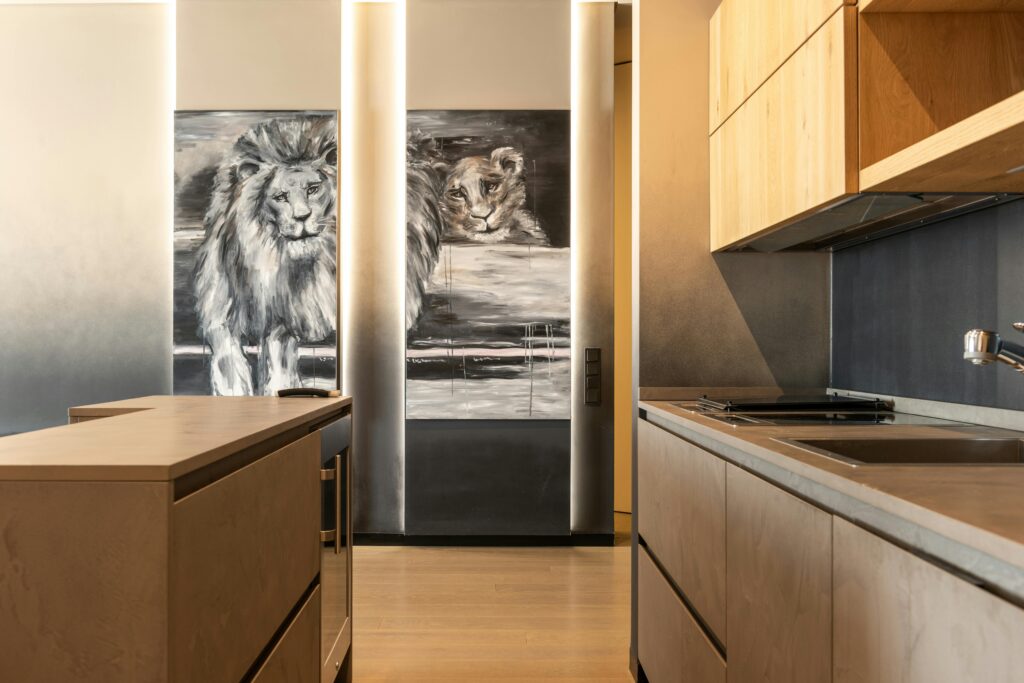
Do I Need to Sand Before Painting Cabinets with Chalk Paint?
One of the major appeals of chalk paint is its reputation for not requiring sanding before application. While it’s true that chalk paint adheres well to many surfaces without sanding, it’s important to assess the condition of your cabinets before deciding whether sanding is necessary.
In general, chalk paint can bond well to most surfaces, including cabinets, without the need for sanding. However, there are certain situations where a light sanding might still be helpful:
- Uneven Surfaces: If your cabinets have an old, glossy, or uneven finish, lightly sanding can help create a more uniform texture for better paint adhesion.
- Surface Imperfections: If your cabinets have dents, chips, or other imperfections, sanding can smooth out these areas before applying chalk paint to ensure a flawless finish.
- High-Traffic Areas: Cabinets in kitchens or bathrooms that are exposed to a lot of wear and tear may benefit from a light scuff to ensure the paint adheres properly and lasts longer.
For many people, skipping sanding is one of the biggest advantages of using chalk paint, but light prep work can go a long way in ensuring durability and smoothness.
Why Chalk Paint Is Often Advertised as “No-Sanding Needed”
Chalk paint is often marketed as “no-sanding needed” because it has a unique formula that allows it to bond directly to most surfaces, even without the preparation that traditional paints require. Here’s why:
- Built-In Adhesion Properties: Chalk paint contains more binder and pigment compared to traditional paint, which helps it adhere to a variety of surfaces without needing a rough texture to grip onto.
- Thicker Consistency: The thick, creamy consistency of chalk paint allows it to cover a wide range of materials without the need for sanding. This makes it ideal for furniture and cabinetry, where a rustic or distressed look is often desired.
- Easier to Distress: One of the key features of chalk paint is its ability to be easily distressed, meaning it can be layered over existing finishes without sanding. This allows you to create a vintage, shabby-chic aesthetic by simply applying the paint and distressing it after it dries.
Despite these benefits, the “no-sanding” claim doesn’t mean you should never sand, especially for high-traffic cabinets. In some cases, a light sanding or deglossing may still be beneficial for optimal adhesion and a smoother finish.
Preparing Cabinets for Chalk Paint
Properly preparing your cabinets before applying chalk paint can enhance the final result and ensure a durable, smooth finish. Here’s how to prepare your cabinets for chalk paint:
- Clean the Cabinets: Begin by cleaning your cabinets thoroughly to remove any dirt, grease, and grime. Use a degreaser or a mild soap and water solution. Pay close attention to areas with buildup, especially around handles and knobs.
- Degloss (If Necessary): If your cabinets have a high-gloss finish, it can be helpful to use a deglosser (liquid sandpaper) instead of sanding. This will help the chalk paint adhere better while still skipping the traditional sanding process.
- Fill Holes and Imperfections: If your cabinets have dents, holes, or scratches, fill them in with wood filler. Once the filler dries, lightly sand the patched areas to smooth them out.
- Lightly Sand (Optional): If you feel your cabinets need a smoother surface or you’re painting over a shiny finish, lightly sand the areas to scuff up the surface. Focus on problem areas like edges, doors, and corners.
- Prime (If Desired): Chalk paint typically doesn’t require a primer, but if you’re painting over a dark wood or plan to use a light color, applying a primer can improve the coverage and prevent stains from showing through.
- Apply the Chalk Paint: Once the surface is prepped, you can begin painting. Use a brush or roller to apply the chalk paint in thin, even layers. Allow each layer to dry completely before adding another.
By following these steps, you can ensure a smooth, lasting finish with chalk paint, even if sanding is optional for the process. Would you like to explore more about chalk paint or other painting methods?
Can You Paint Cabinets Without Sanding?
Yes, it is possible to paint cabinets without sanding, but whether you should depends on the condition of your cabinets and the type of paint you’re using. While sanding is a traditional prep step for achieving a smooth and durable paint job, there are alternatives that allow you to skip sanding, especially if you’re working with certain surfaces or using specific products.
For instance, if your cabinets have a smooth surface or a finish that’s in good condition, you might not need to sand before painting. However, skipping sanding can sometimes affect paint adhesion and longevity, especially if the surface is glossy, oily, or has years of accumulated grime.
Here are some factors to consider when deciding if you can skip sanding:
- Type of Paint: Chalk paint, milk paint, and other low-odor paints are often marketed as “no-sanding” solutions because they adhere well to most surfaces without needing sanding.
- Cabinet Surface: If the cabinets have an old, glossy, or worn-out finish, sanding (or at least scuffing) might still be needed for the paint to stick properly.
- Desired Finish: If you’re aiming for a smooth, flawless finish, sanding is typically recommended to avoid visible brushstrokes or uneven areas.
While sanding isn’t always required, using the right preparation methods will ensure the paint adheres well and results in a lasting finish.
The Best No-Sanding Solutions for Cabinet Makeovers
If you want to skip sanding, several products and techniques can help achieve a smooth finish without the need for sanding. Here are some of the best no-sanding solutions for painting cabinets:
- Chalk Paint: Chalk paint is a popular option for those who want to skip sanding. It bonds well to most surfaces, including cabinets, without sanding or priming. The thick, matte finish is perfect for achieving a rustic, vintage look. However, for high-traffic areas like kitchen cabinets, you may want to seal the chalk paint with a protective wax or polyurethane finish to ensure durability.
- Milk Paint: Like chalk paint, milk paint is another option that typically doesn’t require sanding. It adheres well to bare wood and previously painted surfaces without much prep work. However, for better adhesion, it’s recommended to use a bonding agent if the surface is too smooth or glossy.
- Bonding Primers: Bonding primers are specially designed to adhere to difficult surfaces, including laminate, melamine, and glossy cabinets. Applying a bonding primer before painting allows you to skip the sanding process and still achieve a durable, long-lasting finish.
- Spray Paint: Spray painting cabinets with high-quality paint formulated for use on cabinets can also help you avoid sanding. Look for spray paints with bonding agents built in, as they create a strong bond to smooth surfaces without the need for sanding.
- Gel Stains and Paints: Gel stains and paints are thicker and easier to apply to smooth surfaces. They tend to adhere better than traditional stains and require less prep work. Using a gel paint or stain over existing finishes can create a new look without sanding.
Using Deglossers and Bonding Primers as Alternatives
If you want to paint cabinets without sanding, deglossers and bonding primers are two excellent alternatives that can help achieve a smooth, long-lasting finish. These products allow you to skip the traditional sanding step while ensuring proper paint adhesion.
- Deglossers:
- What They Are: Deglossers are liquid products that remove the shiny, glossy finish from cabinets without the need for sanding. They work by chemically breaking down the glossy layer, creating a dull surface that allows paint to adhere more effectively.
- When to Use: Use a deglosser if your cabinets have a shiny finish, such as varnish or polyurethane. After applying the deglosser, wipe the surface clean and allow it to dry before painting.
- Advantages: Deglossers are fast and easy to use, saving time and effort compared to sanding. They also work well for surfaces that are difficult to sand, such as cabinets with intricate designs or hard-to-reach areas.
- Bonding Primers:
- What They Are: Bonding primers are specially formulated primers designed to adhere to difficult surfaces, such as laminate, melamine, and glossy finishes. They help create a strong bond between the cabinet surface and the paint.
- When to Use: Bonding primers are ideal when painting over smooth, non-porous surfaces that would normally require sanding. They’re especially useful when working with laminate cabinets or cabinets that have been previously painted with a high-gloss finish.
- Advantages: Bonding primers eliminate the need for sanding and provide excellent adhesion, which helps the paint last longer and resist chipping. They also improve coverage and reduce the number of paint coats needed.
Using these no-sanding alternatives can save you time and effort during a cabinet makeover while still achieving a professional, lasting finish. However, for the best results, make sure to choose the right products and techniques based on your cabinets’ condition and the desired finish. Would you like more details on any of these methods?
Tips for Faster and Easier Cabinet Sanding
Sanding cabinets can be a time-consuming task, but with the right approach and tools, it can be faster and easier. Here are some tips to streamline the process:
- Use Power Tools: An electric sander will make the job significantly faster than hand sanding. An orbital sander or random orbital sander is perfect for large, flat surfaces, allowing you to cover more area with less effort.
- Start with Coarse Grit: Begin with a coarse grit sandpaper (around 80-grit) to break through the existing finish. This helps to quickly scuff up glossy surfaces and remove any imperfections. You can then move to finer grits for a smoother finish.
- Work in Sections: Break the sanding process into manageable sections. Work in small areas at a time, especially when using hand tools, to avoid missing spots and achieve consistent results.
- Use a Sanding Block for Control: For detailed areas like edges, corners, and trim, use a sanding block or foam sanding pads. This will give you more control and ensure even sanding without damaging the wood.
- Avoid Over-Sanding: Don’t over-sand your cabinets, as this can damage the surface or cause grooves. Aim for a light sanding that scuffs the surface enough to help the paint adhere, but without creating deep scratches.
- Use Dust Extraction: Attach a dust extractor or use a vacuum with your sander to minimize the dust generated during the sanding process. This will help keep your workspace cleaner and allow for better visibility.
- Sanding Between Coats: After the first coat of paint or primer, lightly sand with a fine grit (220-grit) to smooth out any brush strokes or imperfections. This will help the next layer of paint adhere better.
Choosing the Right Grit of Sandpaper for Different Surfaces
Choosing the right grit of sandpaper is essential for achieving the desired finish without damaging the surface. Here’s a guide to selecting the appropriate grit for different cabinet surfaces:
- 80-120 Grit (Coarse to Medium):
- Use for: Heavy prep work, removing old paint or finishes, and sanding rough wood.
- Ideal for: Cabinets with thick or glossy paint, raw wood, or surfaces with heavy imperfections.
- Tip: Start with coarse grit for aggressive sanding, then move to a finer grit to smooth the surface.
- 150-180 Grit (Medium to Fine):
- Use for: General sanding and smoothing out rough areas after initial sanding.
- Ideal for: Surfaces that are relatively smooth but still require some preparation, such as lightly stained wood or cabinets with existing paint that needs to be sanded lightly before repainting.
- Tip: Use this grit when transitioning between coarse sanding and the finishing steps.
- 220-300 Grit (Fine to Very Fine):
- Use for: Final sanding before applying primer or paint, and for smoothing the surface between coats of paint or varnish.
- Ideal for: Achieving a smooth, flawless finish. Use it to sand after applying the first coat of paint or primer to remove imperfections.
- Tip: Always use fine grit for the final sanding stage to ensure the best adhesion of primer and paint.
- 400-600 Grit (Extra Fine):
- Use for: Polishing and achieving a mirror-like finish.
- Ideal for: High-gloss finishes or if you want a super-smooth, glass-like surface, such as when applying multiple coats of lacquer or clear coat.
- Tip: Use this grit only for finishing touches after all paint layers have dried completely.
Electric Sanders vs. Hand Sanding: Pros and Cons
When deciding between an electric sander and hand sanding, each method has its own advantages and drawbacks. Here’s a breakdown:
Electric Sanders
Pros:
- Speed: Electric sanders can cover large areas much faster than hand sanding, which saves time, especially for big projects like cabinet refinishing.
- Consistency: An electric sander provides a more even sanding result, reducing the chances of uneven sanding or creating deep scratches.
- Effortless: The tool does the work for you, so it’s less physically taxing, making it a better choice for larger projects or those with limited physical strength.
Cons:
- Cost: Electric sanders can be expensive, especially high-end models.
- Noise: Electric sanders are loud and can be disruptive in a home environment.
- Dust: Even with a dust collection system, electric sanders can still create a lot of dust, which may require additional cleanup.
- Control: Some electric sanders can be difficult to control, especially in tight spaces or intricate trim work.
Hand Sanding
Pros:
- Precision: Hand sanding provides a high level of control, especially for sanding intricate or detailed areas like cabinet edges and trim.
- Cost-Effective: Hand sanding requires no investment in power tools, making it an affordable option.
- No Power Required: You don’t need electricity or batteries, so you can easily sand in areas where access to power is limited.
Cons:
- Time-Consuming: Hand sanding takes much longer, especially for large surfaces like cabinet doors or wide drawers.
- Physical Effort: Sanding by hand can be tiring, particularly if you have many cabinets to sand or if you need to sand large areas.
- Inconsistent Results: If you’re not careful, hand sanding can result in uneven pressure, leading to an uneven finish.
For faster and more efficient sanding, an electric sander is ideal for large areas and heavy-duty sanding, while hand sanding can be useful for detailed work or small projects. A combination of both methods can offer the best results, allowing for speed and precision in one project.
Final Thoughts
Whether or not you need to sand your cabinets before painting ultimately depends on a few key factors: the current condition of the cabinets, the type of paint you’re using, and the desired finish. While sanding is traditionally considered essential for a smooth, long-lasting paint job, it’s not always required, especially when you’re using products designed to adhere without sanding, like chalk paint or bonding primers.
If you’re working with cabinets that have a glossy finish, uneven texture, or old paint that’s peeling or chipping, sanding is a necessary step to ensure the paint sticks properly. However, if your cabinets are in good condition, using the right products and techniques—like deglossers, bonding primers, or chalk paint—can allow you to skip sanding and still achieve a beautiful finish.


